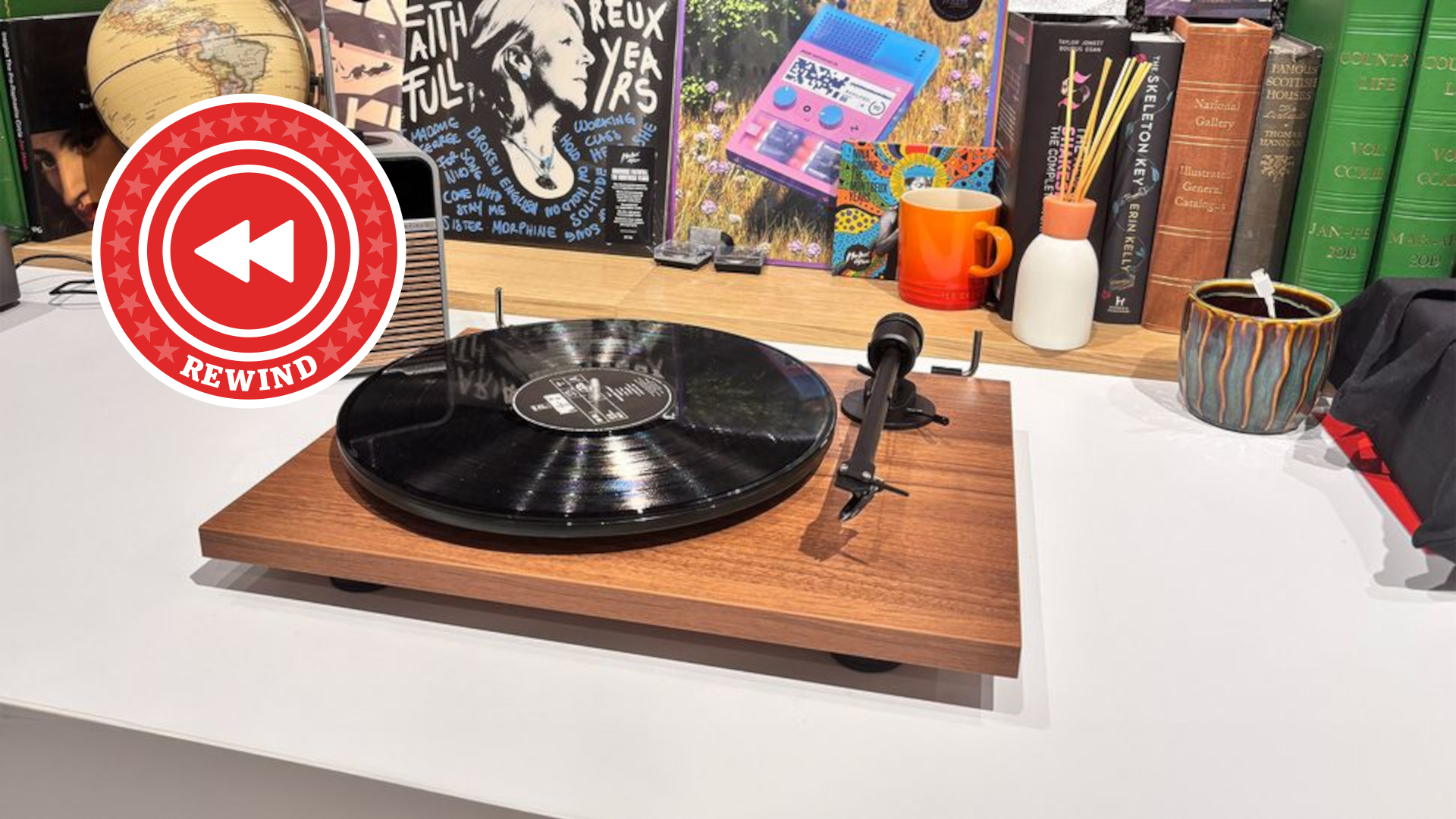Bose Smart Soundbar vs Sonos Beam Gen 2: how do they compare?
Bose takes on the market leader
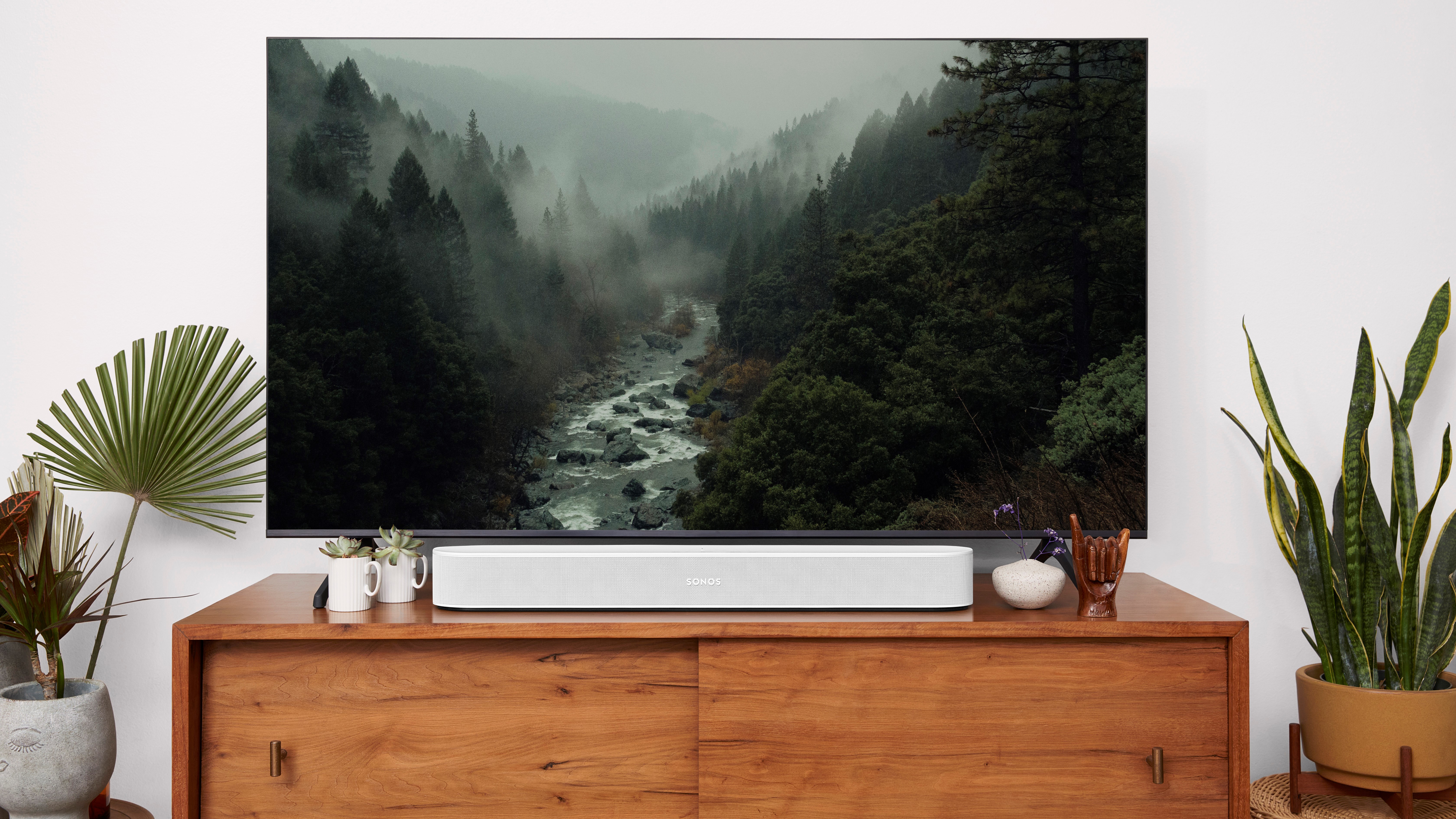
The best TVs have improved their sound in recent years, but the best soundbars will still take your sound to the next level.
You don't have to spend high three figures for a serious bump in quality, either. The Award-winning Sonos Beam Gen 2 can be found for under £400/$500, for example. And now it faces a new challenger in the form of the Bose Smart Soundbar. We haven't tested this model yet, but we have had a good look at its specification and can make some educated guesses based on Bose's recent soundbar history.
Should Sonos be worried? Let's find out as the two 'bars go head to head.
Bose Smart Soundbar vs Sonos Beam Gen 2: price
The Bose Smart Soundbar sits below the Smart Soundbar Ultra in Bose's range. As such, it's a fair bit cheaper too – £599 / $499 / AU$TBC. But that is more expensive than the Sonos Beam Gen 2, which launched at £449 / $449 / AU$649 and has seen a few discounts since then. You can often find the Beam Gen 2 for less than £400, in fact.
Couple that with the fact that the brand new Bose isn't likely to receive a discount any time soon, and the Beam Gen 2 is the clear winner here.
Bose Smart Soundbar vs Sonos Beam Gen 2: design
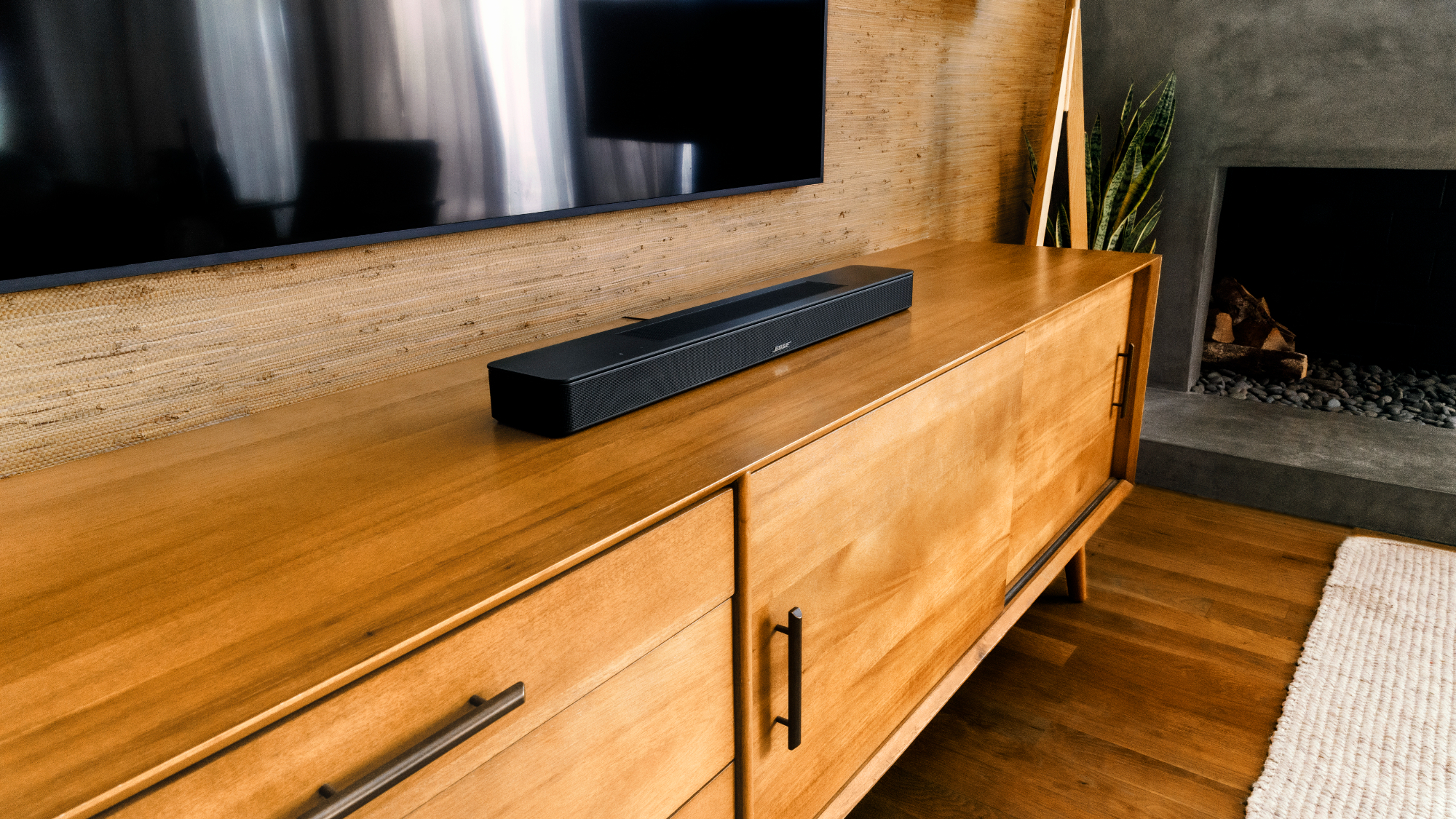
If you remember the first-gen Sonos Beam, you will know what the Gen 2 looks like. It has the same dimensions and curved edges, with the main aesthetic difference being the perforated polycarbonate grille (which is supposedly more durable and easier to clean than the Gen 1's woven fabric finish).
Inside are four front-facing mid-woofers, a centre tweeter, five Class D amplifiers and three passive radiators to help with bass notes.
The top surface is home to an array of touch-sensitive buttons, LEDs and far-field mics for Alexa and Google Assistant control, while in the recess around the back you will find connections for power, ethernet and HDMI eARC as well as a connect/reset button. Sonos has colour-matched this recess and the power and HDMI cables to the finish of the 'bar itself, which is a nice touch.
The Bose Smart Soundbar also has a front grille, but no LEDs to tell you what it's up to. At 5.6cm tall and 69cm wide, it is shorter but wider than the Beam Gen 2 – that means it's less likely to obscure your TV screen, but also more likely to hang over the edges of your TV cabinet.
Inside are five transducers: two side-firing racetrack transducers, a centre-channel tweeter and dual upward-firing drivers for Dolby Atmos height effects. It also has ports for HDMI eARC, optical connections and a subwoofer. And because black is the only option, we suppose that means it's all colour-matched as well.
Bose Smart Soundbar vs Sonos Beam Gen 2: features
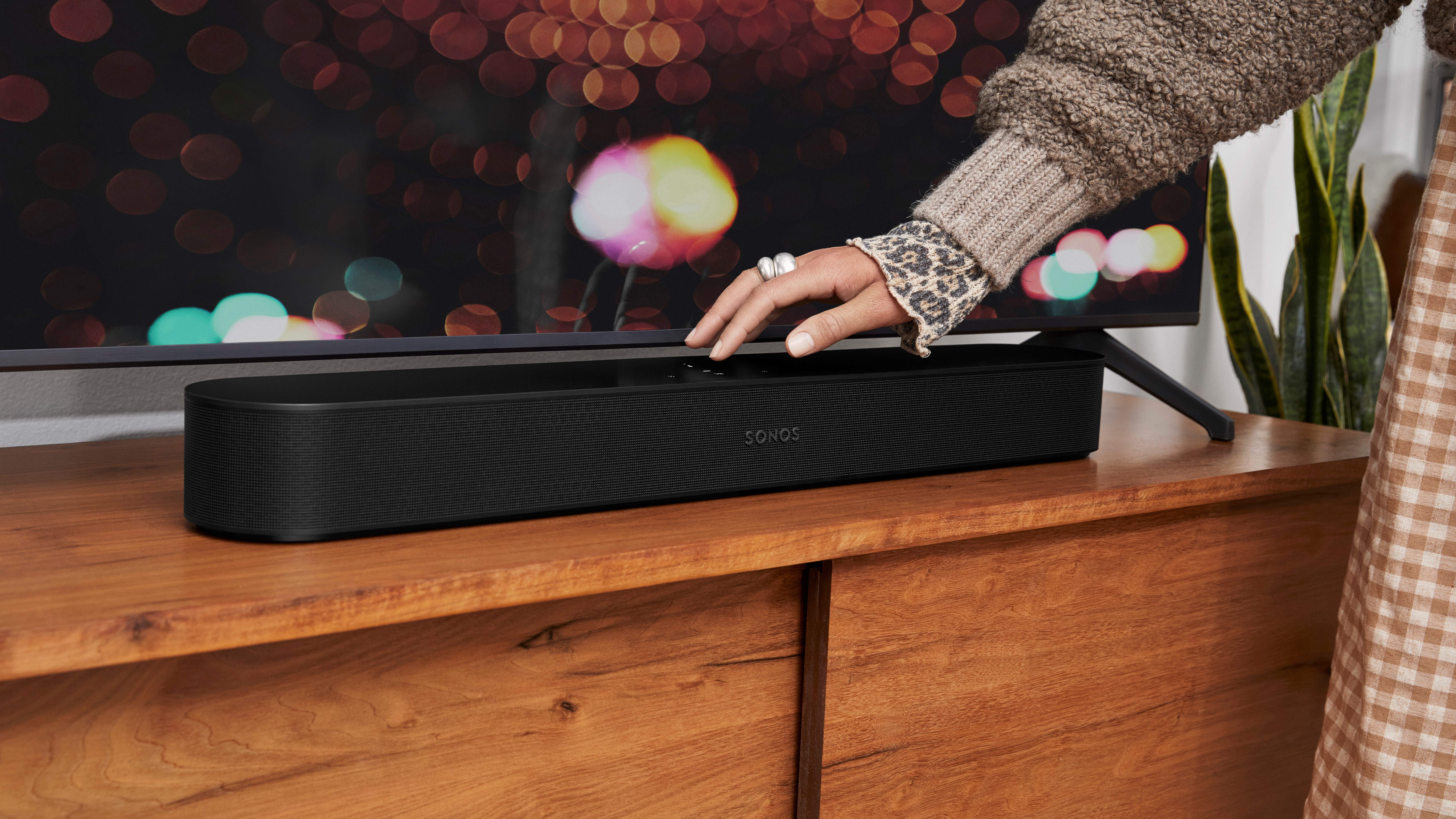
This being Sonos, one of the main selling points of the Beam Gen 2 is its multi-room skills. This means that it can slot seamlessly into a Sonos set-up and work alongside speakers such as the Era 300 and Roam 2, and even the Sonos Ace wireless headphones (following a software update).
The Sonos app is where you get your multi-room kicks, and despite its recent woes, it still offers plenty of features. Trueplay calibrates the sound to your room, the two-band equaliser lets you tweak the sound and you can see which audio codec you are currently receiving. Have other Sonos speakers in the same room? You can connect the Beam as part of a surround sound set-up.
AirPlay 2 lets you stream from your mobile device to the Beam Gen 2, while Spotify Connect lets you play tracks direct without needing a separate device running the app. It also supports lossless 24-bit/48kHz tracks from Amazon Music Ultra HD and Dolby Atmos Music.
That's plenty to play with, but the Bose Smart Soundbar isn't short of features either. Again, the app gives you more options than the remote control, with AirPlay and Chromecast, Spotify Connect, Deezer, and Amazon Music all on board. You also get internet radio and equaliser adjustments, as well as the ability to tweak the volume of the centre and height channels to suit the room.
Unique to the Bose Smart Soundbar – though it is coming to other Bose soundbars – is Bose Personal Surround Sound. This uses the Bose Ultra Open Earbuds as rear surround-sound speakers – pop them in your ears, and you will hear what would come through a pair of rear speakers. Because of the earbuds' open design, you'll hear audio from the soundbar (as well as other sounds in the room). We can't wait to experience it for ourselves.
Bose AI Dialogue mode also enhances speech within the sound mix, making it easier to make out what the actors are saying.
Bose Smart Soundbar vs Sonos Beam Gen 2: sound
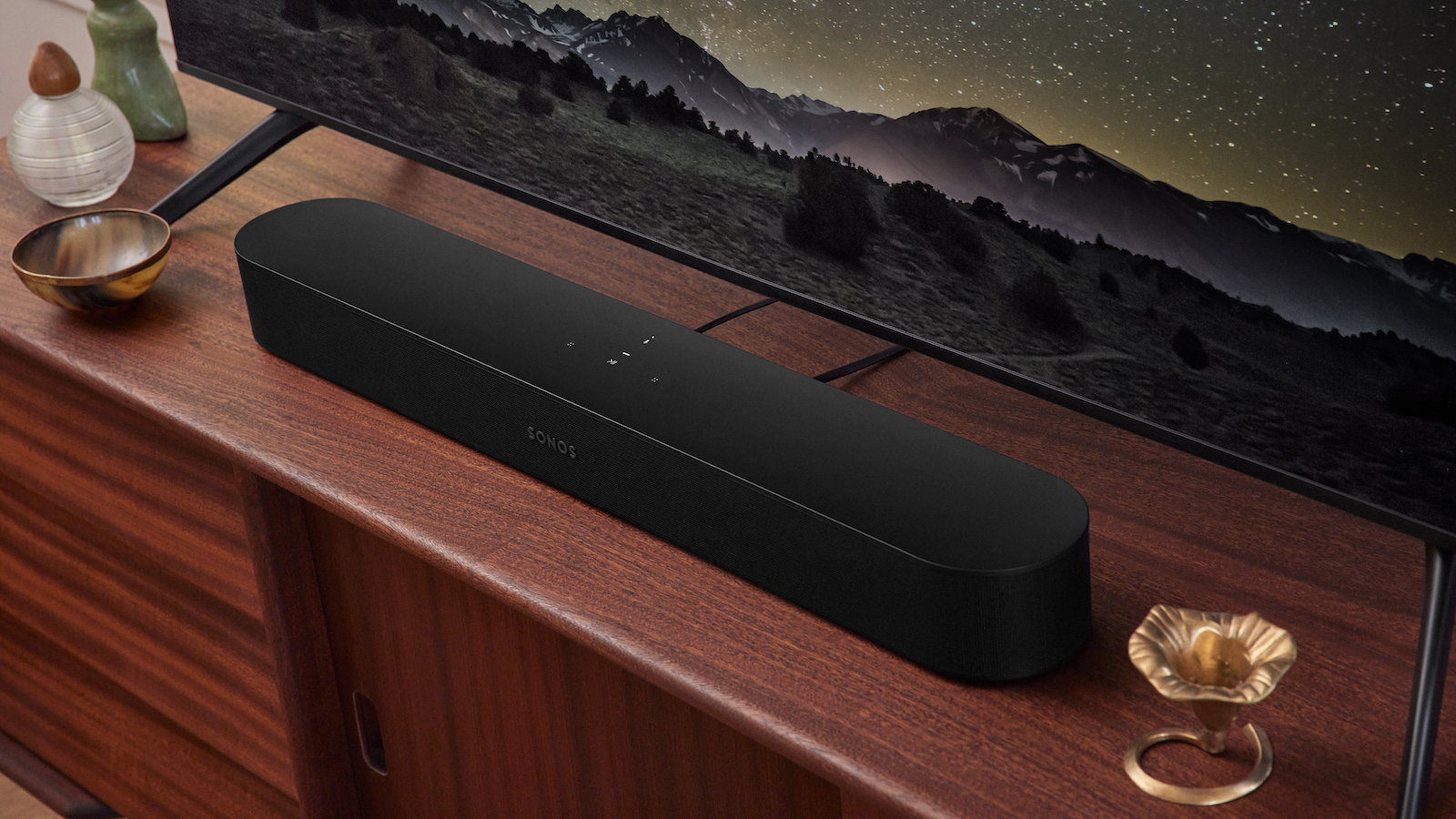
With other categories, we can get a good idea of how a device will fare on paper alone, but there's really no way to know how a product sounds without experiencing it for yourself.
The Bose Smart Soundbar sits below the Smart Ultra Soundbar, which scored only three stars in our review. But that doesn't necessarily mean anything – a brand's step-down model can often perform better as it represents much better value for money. As a replacement for the Bose Smart Soundbar 600, the Smart Soundbar still has its work cut out, as there are plenty of great-sounding soundbars around the same price. It does, however, have upwards-firing drivers – a feature missing from the Beam (Gen 2) – which could help its Dolby Atmos performance. But at this stage, there is no way of knowing. We'll update this section once we have tested the new Bose ourselves.
The Sonos Beam (Gen 2) is the market leader at this level, having picked up a What Hi-Fi? Award for the past three years running (and the year before that, 2020, its predecessor won the gong). A large part of that is its Dolby Atmos performance. Despite the lack of upwards-firing drivers, the Sonos Beam Gen 2 handles Atmos content beautifully; in this area, it's still the best in its price range three years after launching. Placing sounds within the soundfield makes for a more immersive experience with much more scale, even if genuine overhead sounds are a stretch too far for the Sonos.
What it does manage is remarkable consistency across both the soundfield and frequency range. It also hands over sounds seamlessly between drivers. The central tweeter produces remarkable clarity and transparency, which is even more apparent when you task the Beam (Gen 2) with music instead of films – it's a nice, open soundstage with every instrument given space to breathe. The low end is taut, and there's plenty of drive to keep up with faster tempos. You can also push the volume without any harshness creeping in.
Bose Smart Soundbar vs Sonos Beam Gen 2: early verdict
Without having reviewed the Bose Smart Soundbar, we can't comment on how it performs, which is of course the main consideration when buying a product. Its specification sheet certainly looks impressive, with plenty of features and compatibility with some of the best audio formats around. We are also keen to test the Bose Personal Surround Sound feature – could it be a gimmick, like the Bose Immersive Audio feature on the QuietComfort Ultra Headphones, or a genuine innovation that negates the need for rear speakers (for solo viewing, at least)? We'll have to see...
Bose has its work cut out against the Beam Gen 2. Sonos's mid-range soundbar has won multiple Awards for a very good reason – it is bursting with features, and sounds fantastic, especially when presented with Dolby Atmos content. It is also cheaper than the Bose.
We will update this article once we have put the Bose through its paces.
MORE:
Bose Smart Soundbar vs Smart Soundbar Ultra: how do they compare?
Sonos Beam (Gen 2) vs Sonos Arc: is the Arc worth the extra?
The best Dolby Atmos soundbars you can buy
Get the What Hi-Fi? Newsletter
The latest hi-fi, home cinema and tech news, reviews, buying advice and deals, direct to your inbox.
Joe has been writing about tech for 20 years, first on staff at T3 magazine, then in a freelance capacity for Stuff, The Sunday Times Travel Magazine (now defunct), Men's Health, GQ, The Mirror, Trusted Reviews, TechRadar and many more. His specialities include all things mobile, headphones and speakers that he can't justifying spending money on.

